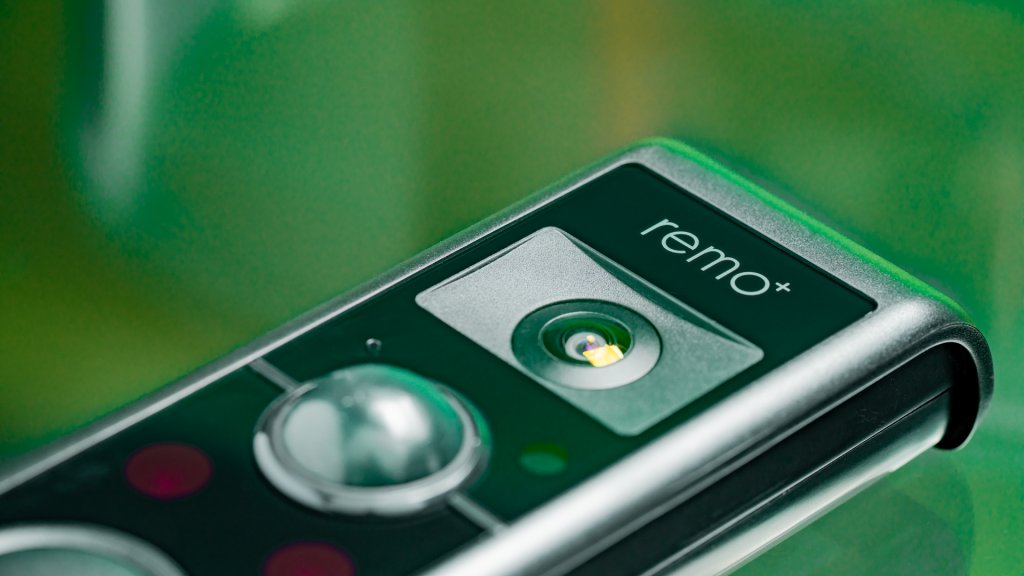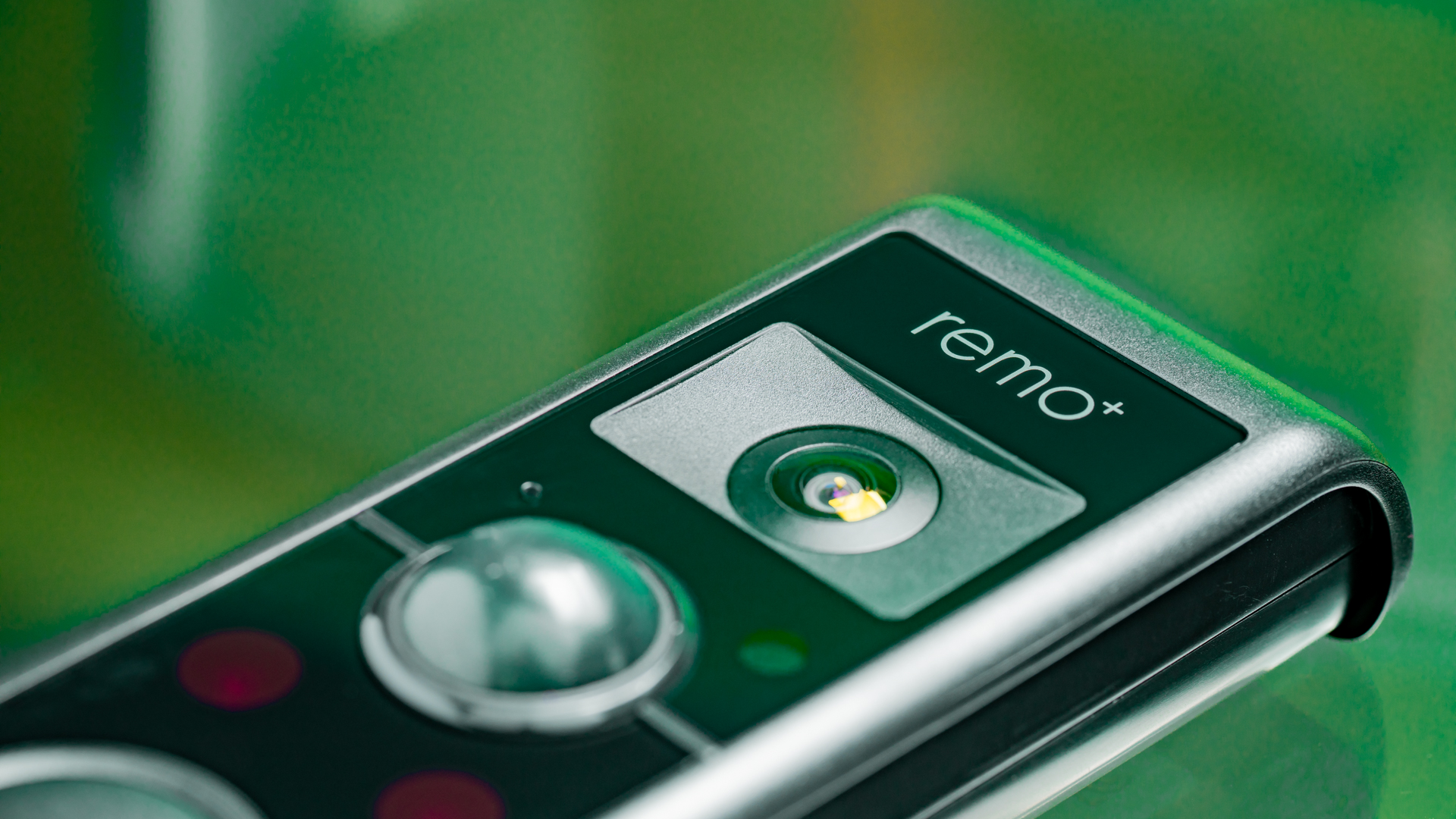
Remobell S and Remobell W were two new smart video doorbells debuted at this year’s CES, amongst a tidal wave of new Wi-Fi doorbells from every company that you have and haven’t heard of yet. While remo+ is no newcomer to the smart doorbell market, their two latest models offer a big step up from the first devices they have put out on the market to date.
With such a saturated market, the best smart video doorbell needs to stand apart on at least one of the key pillars: high-quality video, practical features, low cost, and a reliable app. Plenty of the no-name brands that have cropped up in the past couple years will not be around to see the second iteration of their product go to market, but with remo+ they are now into their fourth model of a smart camera for the front door, and seem to have made an impression on the market.
How to Install the RemoBell Smart Video Doorbells
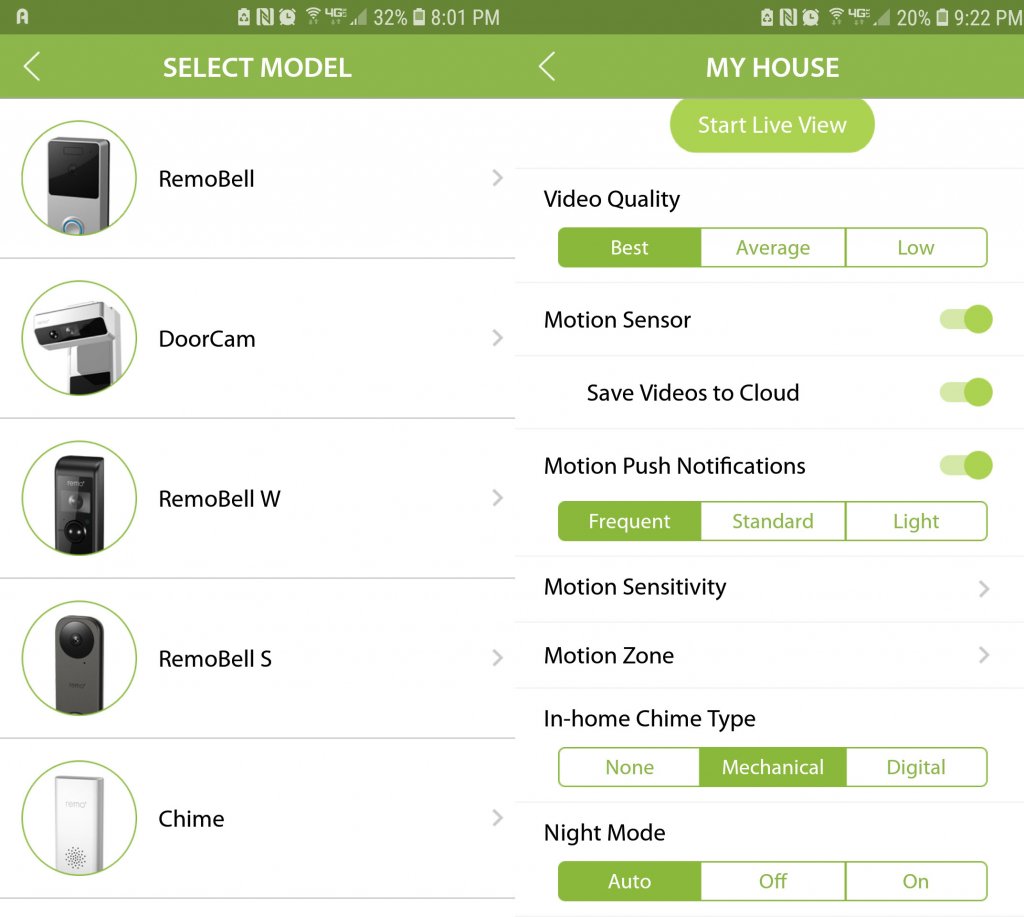
It is really quite simple to install the RemoBell models, as with most wired smart doorbells. At first it might be a bit intimidating for those who are unfamiliar with electrical work aside from plugging things in, but only a few quick connections is all it takes for a smooth installation if the proper hardware is in place.
- Check to ensure you have a 16V doorbell transformer, which is quite common with many standard doorbell systems. If your current transformer is less than 16V (10VA) you must switch it out, since the video doorbell requires additional power. Here is a doorbell transformer that can power the RemoBell S or W, although there are plenty of others that would work.
- Turn off power to the circuit breaker that connects the doorbell, and remove the old doorbell
- Use the mounting plate to mark the position of the screws, and insert them into the wall, fastening the mounting plate around the wires from the doorbell chime
- If needed, use one of the angled mounting plates to position the video camera at the optimal angle to capture video of visitors and action on the doorstep
- Connect the wires from the video doorbell to the chime wires, using an included fuse wire between the two
- Secure the new video doorbell to the mounting plate using the included screws
- For the RemoBell W, remove the current wires that are on the “TRANS” and “FRONT” terminals on the chime, and use the included power adapter kit to attach the new connection wires to the “TRANS” and “FRONT” terminals. Connect the previous wires to the appropriate sides of the new harness.
- For the RemoBell S, the included power kit is a bit different. Simply disconnect the current wires from the transformer, plug them into the power kit and attach the terminals to the points on the transformer.
- Turn on the circuit breaker to power the chime and doorbell back on
- Download the app, pair the device, and you’re set!
One thing to consider when setting up connected devices in the home is the networking requirement. With RemoBell’s models the 2.4Ghz network is the band of choice, and having 5Ghz enabled may cause problems with initial setup or functionality.
RemoBell S
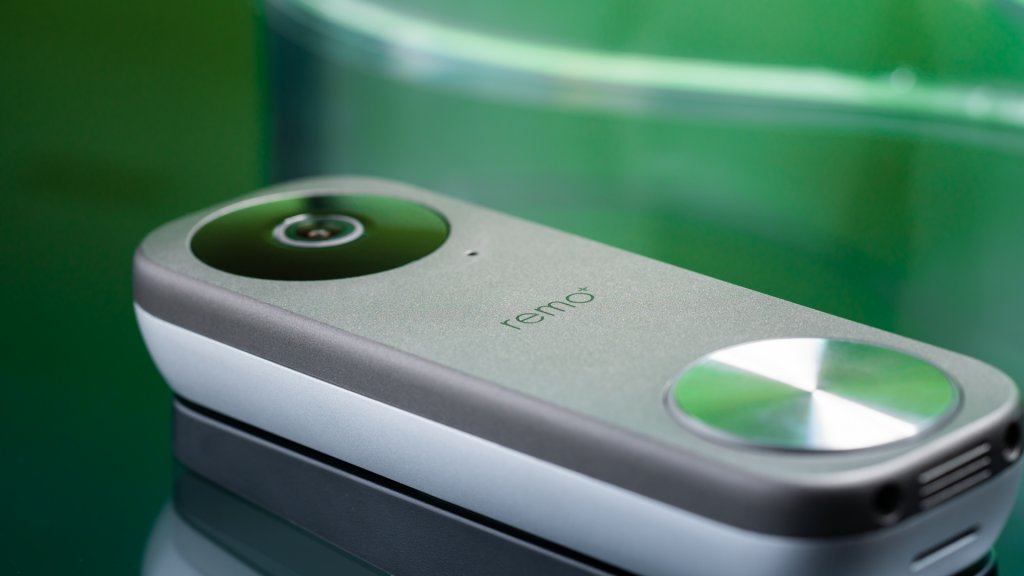
I am quite fond of the look that remo+ went with for the S, which takes on a contemporary look. The infrared LEDs for night vision are tucked around the camera lens, which offsets the large button for a very aesthetically appealing piece of hardware for the front door. The overall size of the RemoBell S is 5.1”x1.8”x0.84”, and it works with mechanical or digital chimes. In addition to the compatibility with other digital chimes it can also pair up well with the remo+ Indoor Chime for remote ringing via USB power.
Features
- 1080p
- Two-way audio communications
- Live view video
- IR night vision
- 3 days of free rolling cloud storage
- Fisheye de-warping for live view
- 180° FOV (horizontal and vertical)
- Adjustable motion zones
- Weather resistant
- Mobile push notifications on iOS 9+, Android 4.1+
- Amazon Alexa, IFTTT, Google Assistant compatible
- Up to five account users
Performance
The image quality of the smart video doorbell is good in daylight: you won’t be using it for any submission to Sundance Film Festival, but it gets the job done. Activity can be clearly identified, however fine detail like license plate numbers are difficult to pick out. Sometimes when there is a bright backlight from daytime lighting and the shadow of a porch awning, it is difficult to see facial features of approaching visitors. This has largely been remedied with the latest update that launched, which allows for a new Region of Interest (ROI) mode for viewing faces when they are cast in shadow due to a dark background. There is still a hint of darkness that results from the camera adapting to the difference in lighting, but it has become more clear with the new Wide Dynamic Range (WDR) software.
During the night, with a porch light on visibility was limited beyond the immediate space surrounding the light. In complete darkness, close-range visibility improves by using the infrared night vision, which you can see activated by a series of LEDs surrounding the lens.
You are able to stretch the video into a rectangle within the live view to counteract the fisheye, but that is not available in the playback function. The remo+ app does not cache video for recording a few seconds before motion is detected like some other models, which is a bit of a letdown for me. Getting the extra information about what activity happens leading up to a motion trigger is a benefit.
The RemoBell S is immediately sends alerts for motion, and the detection range is more proficient than I would have expected. When initially installing outdoor smart surveillance devices it is common to calibrate the motion sensor down to fit the setting, so there isn’t a constant barrage of notifications for the tree branches blowing in the wind. With the S, although there is always customization available to fine tune your notifications, a recent firmware update has made the app less sensitive to false alarms and notifications. This has made the doorbell more proficient at filtering out false positive alerts, so your phone isn’t constantly going off unnecessarily.
One element that I think is valuable the RemoBell S has is the ability to adjust daytime and nighttime motion sensitivity independently from one another. Users can choose one of seven levels for each, and then set the night start and end times. This is a nice feature I haven’t seen in other smart surveillance cameras.
Once the motion sensitivity itself is adjusted, another setting to modify to my liking was the notification frequency, with the options being “Frequent, Standard, or Light”. “Frequent” sends a push notification any time there is motion detected, while “Standard” only sends a notification if there has not been one sent in the previous five minutes. “Light” only sends a maximum of one notification per 30 minutes, and in my testing the modification of these settings responded accordingly in practice.
At $99, this is one of the cheapest smart video doorbells you can get that seems like it would hold up for a while. The design and build qualities are solid and it gets the job done. remo+ includes features that are practical, and it seems like there was some thought and effort put behind the design. While it would be comparing apples to oranges to try and pit a $99 smart doorbell up against something twice as expensive, I think it makes a very compelling case for a lot of people not looking to drop several hundred dollars on something that could be done for cheaper.
RemoBell W
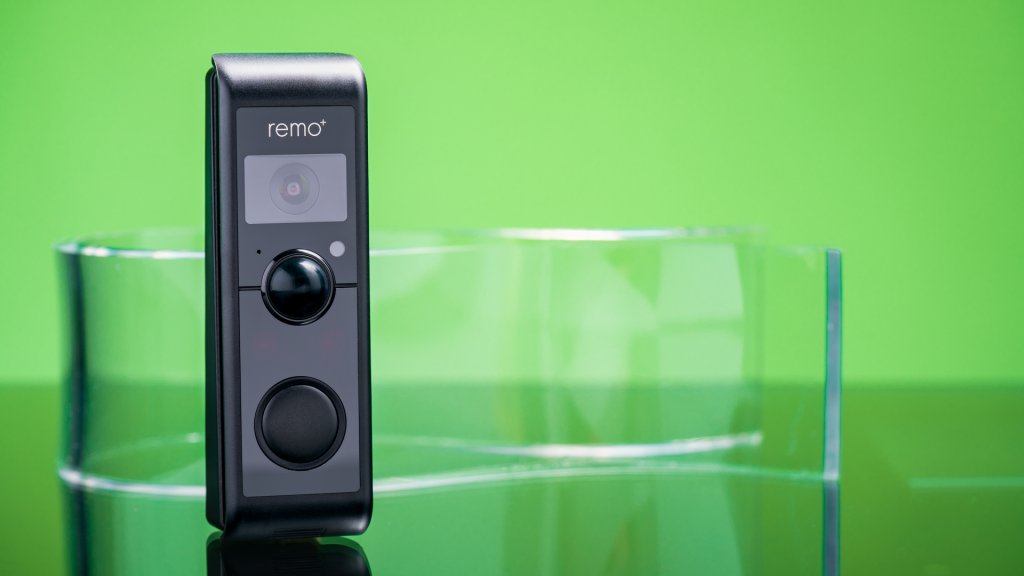
An all-black color palette is used for the RemoBell W, with a blue LED providing solid illumination for the button. While the W is the more physically robust of the two models, it is actually quite average in size for a smart video doorbell. The one element that stands out the most when viewing the device is the infrared sensor that is on the front of the module.
From the factory, the RemoBell W comes packaged with the remo+ Indoor Chime, which is a USB-powered speaker that acts as a standalone chime to wirelessly connect to the doorbell and extend the range. This is a cool device for those with larger houses, or even for use in the backyard or garage if there are times when the normal chime will not alert users to visitors. The physical presence of the W on the entryway is slightly larger than the S at 5.4” x 1.7” x 1”, but really when it is installed it looks quite natural and blends in well. The RemoBell W works with mechanical or digital chimes.
Features
- 1080p
- Two-way audio communications
- Live view video
- IR night vision
- 3 days of free rolling cloud storage
- PIR motion sensing
- 160° FOV
- Mobile push notifications on iOS 9+, Android 4.1+
- Amazon Alexa, IFTTT, Google Assistant compatible
- Up to five account users
Performance
The RemoBell W performed very similarly to the S in terms of function, with some improvements in the overall crispness of the imagery. Additionally, the FOV on the W was lower, allowing for a full-screen rectangle view instead of the “fisheye bubble”.
With the PIR sensors driving the motion detection (instead of the video motion detection on the S), I noticed that there seemed to be less false alarms which would trigger recordings and notifications of nothing. I would chalk this up to the fact that when the PIR sensor detects changes in the temperature, they are often the result of actual object motion. Since the RemoBell S uses video motion detection, the slightest change in the surrounding area can and will trigger push notifications and false alarms (shadows, moving branches, falling leaves, etc).
Smart Video Doorbells That Work with Amazon Alexa, Google Assistant, and IFTTT
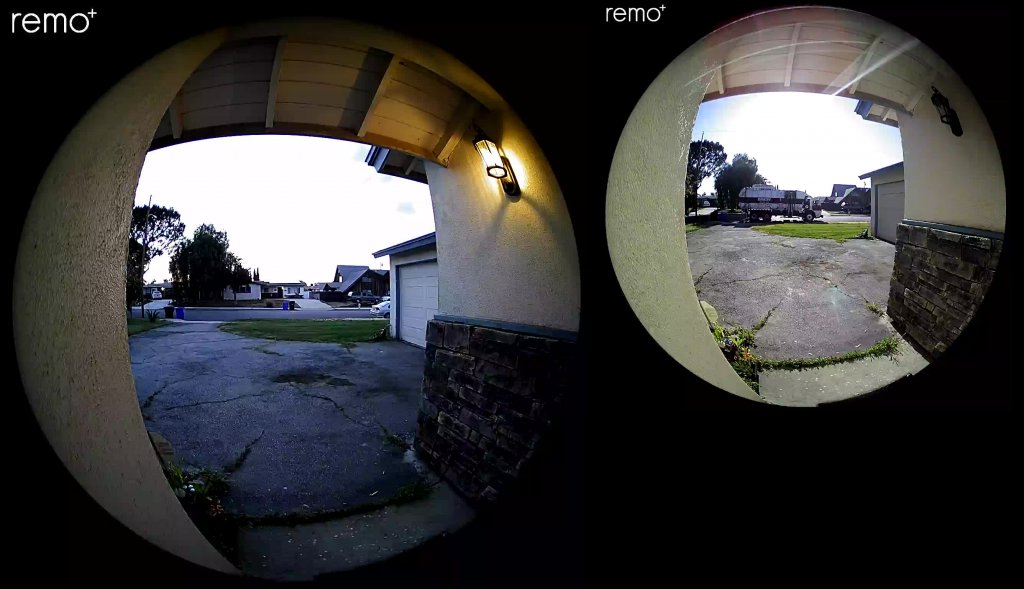
As a manufacturer in today’s world of Smart Home, if you don’t have Google Assistant or Amazon Alexa voice controller integration on your device you’ve done something wrong. With the RemoBell S and RemoBell W, users have access to not only Amazon Alexa and Google Assistant, but also IFTTT (If This, Then That) compatibility for networking various devices and actions together.
When using Alexa or Google Assistant with the remo+ smart video doorbells, users can get updates on the Wi-Fi status and details of the last event. The RemoBell S will work with Amazon Show and Amazon Fire TV to cast a live view feed of the front door, however the same cannot be done with the Google Home Hub as Google has not released the API for viewing a live feed. This should be available as an update in the future when Google is ready.
While having voice controller compatibility is critical for any smart device in principle, the practical application might not quite be as fundamental for use within the Smart Home for some without these video-capable devices. IFTTT on the other hand, is where things really get exciting.
IFTTT is a free software interface that allows various devices to communicate with one another, that might not otherwise have direct integrations. Users can set up events or “applets”, to have a series of triggered events occur amongst different devices. This is my battle cry for the ultimate connected home; Amazon Alexa and Google Home are only part of the picture, IFTTT is the model for the future.
With IFTTT and the RemoBells synced up, users can have lights blink when the doorbell detects motion, when visitors ring the doorbell, receive TV alerts when the doorbell rings, mute the volume on certain devices when the doorbell rings, or even log all activity alerts in a Google Sheet.
RemoBell W vs. RemoBell S: Which is the Best Smart Video Doorbell?
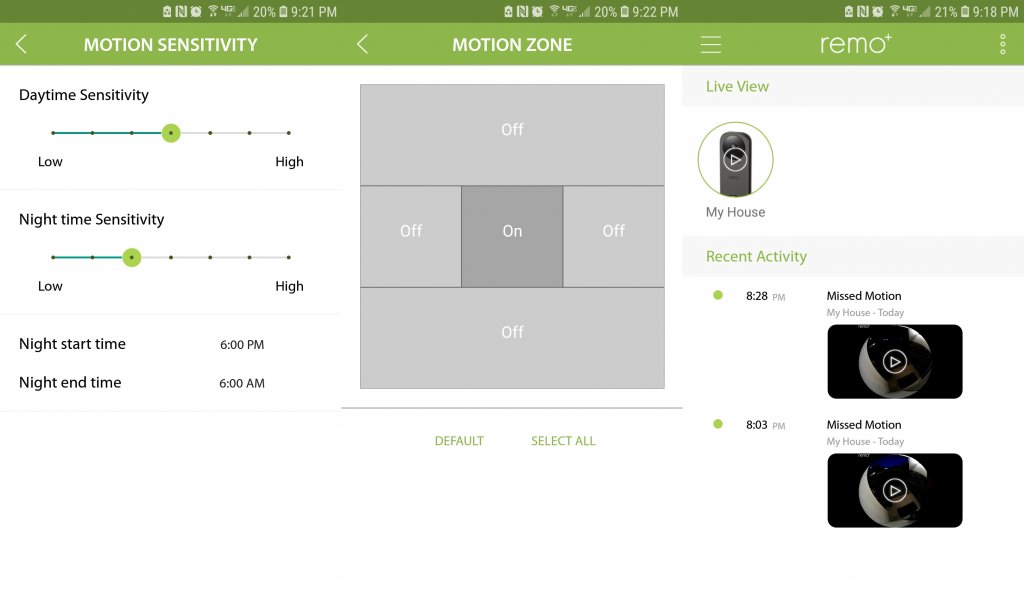
While both video doorbells are solid contenders, with them coming to market a few months apart a comparison between the two is only natural. There are a few areas where I think one pulls ahead, others where they both excel, and still others where they both fall short of my smart video doorbell expectations.
Let’s start with the main critique for both: the app. The end success of any smart video doorbell, or any Smart Home device for that matter, lies with the functionality and usability of the app. While I found the app simple enough to navigate, there were some interface components that I felt could use some polish.
To set the motion detection zones, users need to select a series of cubes and rectangles on the screen which would either ignore or trigger the motion detection recording/alerts. This is common on many smart surveillance devices, and a great feature to have. A minor gripe of mine would be that the actual video feed is not displayed in the zone diagram, so choosing which areas to turn on or off is a bit of guesswork as to which areas will be impacted.
My main gripe with the RemoBell S is really about the fisheye view for the video recordings or still shots. I like that it can be switched to a rectangular view, but I don’t like that this is not available for the recordings. Some people might prefer fisheye-style, but I don’t. Not a huge deal, and for the cost it might be negligible but worth mentioning. Now where it does cause a greater irritation is with the RemoBell W, since we are playing in another price bracket. Since both devices share the same app and same app functionalities, this is also present in the higher-end smart video doorbell.
The RemoBell W seemed to have a sharper image, and because the FOV is 20° less than the RemoBell S, this means that there is no fisheye warping on the video. This is where the W has a leg up on the S, as 180° might be a little overkill in many situations, and sacrificing a few degrees for continuous full-frame video in HD is not just acceptable, but actually preferred.
No Bad Choice: A Doorbell for Any Smart Security System
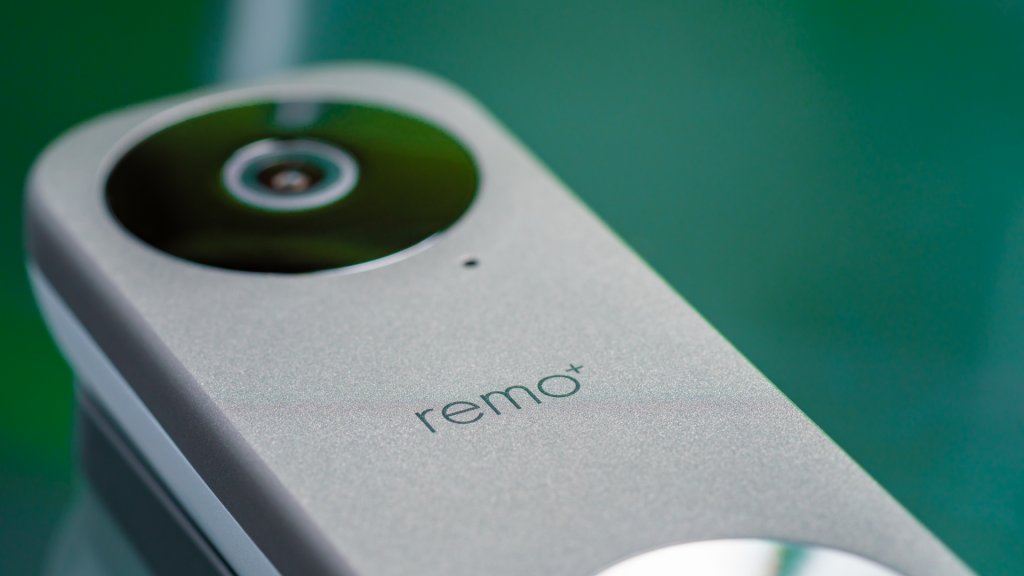
To say that Smart Home enthusiasts have an overload of choices when it comes to smart video doorbells would be an understatement. There is a wide spectrum of models on the market in cost and quality, both of which vary on the individual and their expectations.
Often I’ve found it easy to get distracted by what the best capabilities are on the market, and confusing that with what is practical or necessary. I myself am often guilty of this as well, picking at minute faults in the products that are by all accounts leaps and bounds above what was even imaginable just a few years ago. The fact is that with Smart Home technology advancing so rapidly, we’ve become spoiled and take for granted the actual feats being achieved by these devices.
When it comes down to it, for those looking to find a budget smart video doorbell, the $99 RemoBell S and the $199 RemoBell W are both solid choices with some robust features that put them as strong contenders for those looking to beef up their home security. For someone wanting to get a reliable smart doorbell with all the functionality but without spending over $100, the RemoBell S is a sure “buy” on my list.
Featured in this article:
RemoBell S Smart Video Doorbell – $99
RemoBell W Smart Video Doorbell – $199
Note, all prices and products are accurate at the time of article publication, although some may have changed or are no longer available.

